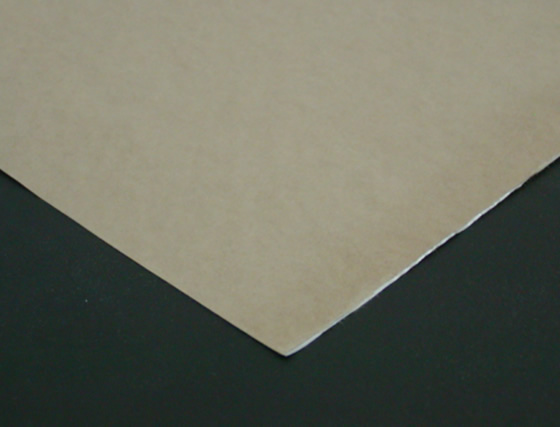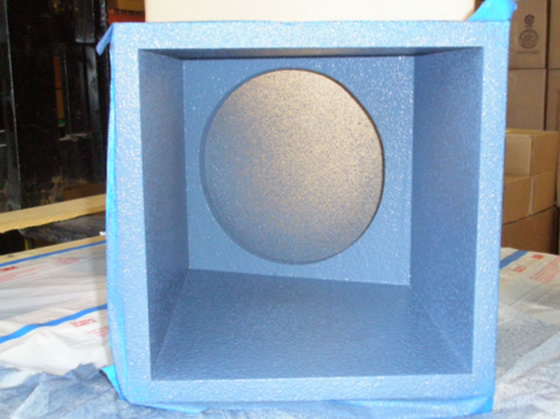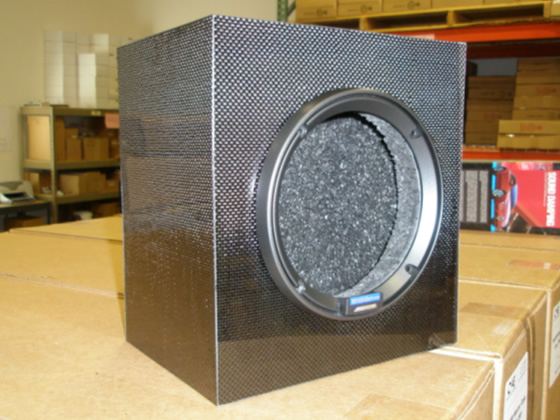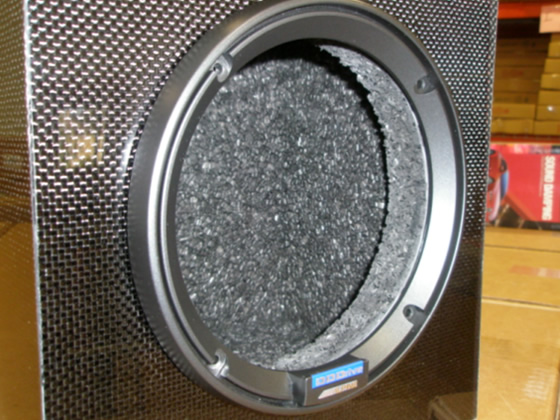|
Thinking Inside the Box.
By Paul M. Messett / Sales & Marketing Manager
12-27-2007
It’s not too often that sound damping materials and speakers enclosures would come up in the same sentence, let alone the same conversation. We have always taught our dealers to maximize performance and profit by building the ubër-box, a box that will deliver every ounce of performance possible from a given speaker. So many people (professional installers too) are concerned with damping doors and floors that the speaker enclosures are rarely if ever treated with the same sound control love.
Same old, same old…
The only thing that most installers and do-it-yourselfers have ever considered adding to an enclosure design is filling the interior with poly fill to compensate for a box that it too small. This is not an entirely bad thing and many speaker manufacturers still recommend that this is done, I have done it for a long time and quite frankly, it’s a necessity when working with small enclosures in specific applications. The installation of poly fill material in this application performs a number of functions…
First, it creates an impedance mismatch which makes the speaker think it is in a larger enclosure than it actually is. The impedance mismatch occurs because the density of the poly fill is different than the density of whatever the enclosure is constructed out of (wood, plastic, metal or fiberglass) and this impedance mismatch can vary depending on how much material is installed into the enclosure. This is good (loose fill) and can lead to a slight increase in output (20%) but at the same time too much poly fill can be bad (displaces volume) and negatively affect sound quality. And be careful how much poly fill you use in a ported enclosure otherwise it will forever “fart” clouds of cotton!
Secondly, the poly fill material will help to dissipate reflective sound energy within the enclosure. This can be good and bad. Good in the sense that it is ideal to prevent speaker back wave from becoming destructive to the driver and bad in the sense that the sound energy is converted into thermal energy as it impacts the structure of the poly fill.
And if you ever known anyone who has used too much poly fill, it can become a mess and a nightmare to clean out of the inner workings of a speaker.
Tasty new treats…
For years we have had products available to help maximize the performance of loudspeaker enclosures whether they are simple fiberglass kick pods or MDF, fiberglass, metal or plastic subwoofer enclosures. Three products in particular are VB1X vibration damping compound, VBFD damped interlayer material for fiberglass construction and DEFLEX Power Pads for all speaker enclosures.
For appetizers, I’d like an order of the damped interlayer please.
If you are really serious about enclosure design and want to take it to the maximum, consider a damped interlayer construction. Some, not all, SPL competitors use this design. If more did, the world would be a louder place.
Let’s start with VBFD, the damped interlayer material for fiberglass construction. This product has been used widely by fabricators outside of the automotive industry to construct low resonant frequency components of fiberglass materials. The VBFD product consists of two thin layers of paper that sandwich a thin layer of aluminum. The paper layers absorb fiberglass resin and the aluminum layer does not. When installed, the VBFD product is cut into strips and inserted in between two or more of the fiberglass fabric layers. This material is designed to create pockets of differing density by essentially decoupling the fiberglass fabric in areas. Of course there are to be several inches of untreated space around the VBFD strips and fiberglass fabric layers should never be totally decoupled. The VBFD product creates a low resonant frequency fiberglass construction compared to the standard highly resonant construction most fabricators are accustomed to.
MDF (Medium Density Fiberboard) or HDF (High Density Fiberboard) speaker boxes can benefit from damped interlayer as well. Rather than building a box from 1” thick material, consider using two layers of material, one layer of ¾” and a secondary layer of ¼”. This combination will offset the seam making construction much easier and will prevent separation of the two layers. DO NOT GLUE THESE TWO LAYERS TOGETHER! Gluing will only couple the two layers together into one continuous piece therefore losing the benefit of being a damped inter layer. Rather, use an adhesive layer that will not cure totally and remain somewhat soft. This will effectively decouple the two layers, provide maximum vibration damping performance and reduce sound transmission through the walls by 10db (half the perceivable volume). We offer interlayer materials for this application, contact me and I’ll steer you in the right direction.
VBFD fiberglass damped interlayer material

The main course, VB1X soup.
VB1X is strongly recommended as a treatment for the interior surfaces of a speaker enclosure. The VB1X product, when cured, will create an impedance mismatch that has been measured to produce a 1db to 3db output gain from speaker systems. Again, the driver will recognize the density difference between the cured VB1X and the enclosure substrate (wood, fiberglass, metal or plastic).
Another benefit of using VB1X inside an MDF subwoofer enclosure is the fact that it will seal the enclosure airtight. MDF, although very dense, is still very porous. The VB1X compound will soak into the wood, cure and seal the surface and gaps where panels meet making the enclosure airtight. This works extremely well in sealed enclosures, not so well on ported enclosure because of the gaping hole venting sound waves. It is not the intention to damp vibration of the enclosure walls of wood enclosures because of the substrate thickness (.75” and higher). However, VB1X (in a thicker than normal layer) applied to the inside of a fiberglass, metal or plastic enclosure will help to damp vibration because the substrate is substantially thinner.
VB1X applied onto the inside of a speaker enclosure

And for desert…
To finish off a sealed enclosure properly, it is strongly recommended that you install a DEFELX PowerPad. The DEFLEX in this application can replace poly fill in the sense that it will prevent standing waves from radiating around the inside of the enclosure. The DEFLEX does not convert sound energy into any other form, it just breaks it up, whereas poly fill will convert sound energy into thermal energy. The DEFLEX, positioned directly behind the driver, will eliminate destructive back wave by fragmenting it entirely and directing the energy sideways. Without it, the sound wave will reflect off of the parallel surface directly behind the driver and back into the cone of the driver. This will cause the speaker to move beyond the input signal and result in popping, breakup and distortion at mid to high listening levels regardless of how much you spent on the driver. The DEFLEX will not compensate for an inability to properly set up your gain, crossover or equalizer settings so always be sure to correctly set these features.
D12 DEFLEX PowerPad for larger speakers 
Digest this too…
To finish off the design, fabrication and installation of a speaker enclosure, if possible bolt that sucker down! You’ll be amazed at how simply bolting the enclosure down to something solid will improve overall performance and output. And it will make it more difficult to steal if that bit of bad karma should ever come your way!
A taste of the future…
Here is a photo of a box design we did for the SEMA SHOW 2007. It is a super lightweight enclosure (1.8lbs) constructed of 1” Acoustical Poly Panel (APP), a absorptive material that comes from our commercial line, a three layer wrap of carbon fiber with a finish layer of carbon fiber on top. The idea behind this box is obviously that it is extremely lightweight but also absorbs and disperses speaker back wave within the walls of the enclosure. This enclosure can also be done in fiberglass instead of carbon fiber to keep costs down. We are currently testing this enclosure design for use in automotive, aircraft and marine applications. We will be releasing more information on this box design at CES 2008 in January. Please call or email me if you have any questions or comments.
Begin drooling in 5…4…3…2…1…commence drooling!


I hope this information has helped you to think “inside the box” when trying to improve sound quality. I am confident that none of our competitors has ever thought to take the use sound control products this far and you can be assured we are constantly pushing the limits of product design and installation. That is what makes us the most knowledgeable and respected sound control company in the automotive industry and if you choose to follow these recommendations, your sound quality will prove it. Please feel free to contact me with any questions or comments you may have regarding this information. Until next time…
Paul M. Messett
Cascade Audio Engineering
Sales & Marketing Manager
<< back
|